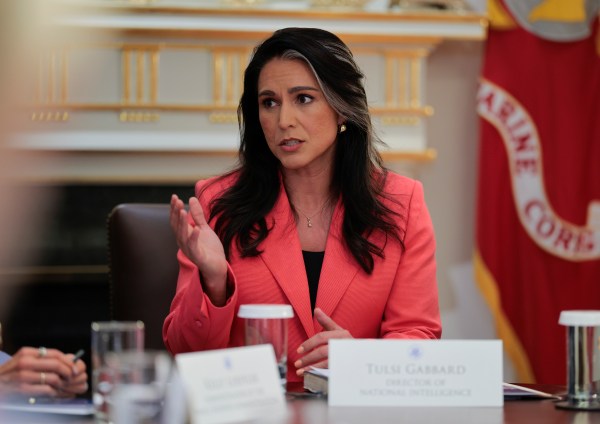Excellent medical care is common in the U.S., but it is provided amid all too evident dysfunction. Quality and access to needed services are high for some patients and low for others. Waste is rampant, and costs have escalated more rapidly than incomes for years. Patients and their insurers often pay widely divergent prices for services provided just miles apart. And the patient and insurance billing system is bureaucratic, opaque, and maddening for all concerned.
The fundamental problem is the absence of discipline and accountability. There is very little incentive for those providing care to patients, or for insurers, to become more efficient over time, or to lower their prices, because doing so provides uncertain returns at best. More often than not, cost-cutting does not translate into expanded market share and stronger financial performance.
In this way, health care stands out. In most sectors, consumers gravitate naturally to the businesses that can eliminate unnecessary costs or find better ways of delivering products and services, which translate into lower prices. But the health care market misfires because of inherent and external factors that protect expensive incumbents even when they underperform and overcharge.
To provide high-quality care with the least possible use of resources, institutions and clinicians need strong financial incentives to become more productive over time, which can be a painful process. For the market to work, firms need to be able to attract consumers by sharing the financial benefits tied to efficiency gains with them. That is not a realistic possibility in many health care settings today because of numerous impediments. As just one example, consumers are price insensitive to expensive care because their costs don’t change once they’ve hit the deductibles in their health insurance plan, so there is no reason to seek lower-priced providers.
Without the prospect of better returns from cost-cutting, firms will look for easier ways to increase their profits, perhaps by increasing their market leverage so they can charge higher, rather than lower, prices to insurers and employers.
The problem is not the lack of cost-saving opportunities. There are many possibilities for improvement, like eliminating clinical steps that provide no clear value to patients, streamlining the non-clinical staffs of hospitals and physician groups, rethinking the clinical pathways for high-expense cases, moving work from higher-paid to lower-paid clinicians, steering patients to the most cost-effective practitioners through various insurance design adjustments, and working closely with patients to prevent their chronic conditions from becoming acute.
One might think of the process of cutting costs without compromising quality as the “reengineering” of U.S. health care. The key question for policymakers is: What can set such a virtuous reengineering cycle in motion, and not just as a one-off occurrence but rather as something that takes place continuously?
Many consider government regulation the solution, but administrative agencies can’t easily write and enforce rules that improve the efficiency of an industry. Providing medical care is an exceedingly complex undertaking, and the government does not have sufficient expertise to reach directly into the care process with confidence.
Since the enactment of the Affordable Care Act (ACA) in 2010, the federal government has taken a more indirect route through a “delivery system reform” effort, with uneven results. The changes initiated by the Department of Health and Human Services have included required use of electronic medical records, more cost-benefit scrutiny of newly introduced products and technology, and financial rewards for successful Accountable Care Organizations in Medicare, which are like managed-care plans run by service providers instead of insurance companies.
Some of the initiatives have produced savings, but the sums are hard to detect in the nation’s vast health system. Overall, national health expenditures have continued to climb, rising from 17.2 percent of GDP in 2010 to 17.6 percent in 2019 (before the COVID-19 pandemic began in 2020).
The mounting frustration with the inability to cut back on wasteful health spending, especially in commercial insurance plans, is leading to louder calls for blunter instruments, and, in particular, price controls.
There is little doubt such controls would work as advertised. Payment regulations have a proven track record in reducing expenditures, in Medicare and in the health systems of other high-income countries, in part because they are easier for the government to enforce than steps aimed at promoting efficiency. With price limits in place, patients pay lower premiums, co-insurance bills, and taxes, which is why they poll well.
Their effects on the efficiency of care delivery, however, are far less certain.
It is possible that government-enforced pricing caps, such as tieing commercial payment rates to those used in Medicare, would encourage some facilities and clinicians to eliminate unneeded expenses, but such a positive response is not guaranteed. For instance, while some providers might lower their costs by lowering the pay rates of key personnel, which would increase efficiency, others might stop providing low-return services that are nonetheless valuable to patients. Another option would be to invest less in capital projects that would improve care in future years rather than immediately. Future patients would get lower quality care but current patients would see no difference in their services.
In the most extreme cases, some service providers might drop out of the market altogether because the government’s pricing limits would be too low to cover their expenses. Supply reduction is an expected outcome when price limits are set below what the markets will bear. Reducing costs by reducing supply could lead to real access problems.
Insufficient supply is a major frustration in many high-income countries that pay for medical care using regulated pricing protocols. The measured costs in these countries are low compared to the U.S., but that is in part because the costs patients incur when they cannot access services on a timely basis are not counted. The U.K.’s National Health Service (NHS) is now widely viewed as suffering from acute access problems after many years of insufficient funding.
Waiting for care can be costly for some patients who suffer pain or loss of functionality. The use of privately funded medical care is now rising rapidly in the U.K. as patients become increasingly pessimistic about the NHS’s capacity to provide necessary care.
Pricing limits are easy to enforce, but hard to set with confidence. Without market signals, there is no surefire formula for calculating a fair price that is not in some way arbitrary. Government agencies will often try to tie limits to some measure of input costs, but, once in place, the limits take on a life of their own and become untethered to objective metrics. Further, once in place, they are not easily repealed. As an example, the government has announced that physician fees will be cut in 2023 by 4.4 percent to comply with budgetary targets that were set independently of factors found in the market for medical services. With price inflation now higher than it has been in decades, the implied real cut in fees for physicians would be substantial, which is why another ad hoc and temporary adjustment is likely to be approved by Congress before the end of the year.
Government price setting also invites political meddling and special interest lobbying that can distort the allocation of resources and create inequities. Over time, incumbent facilities and practitioners often become the main beneficiaries of payment restrictions, as the rules are manipulated to make it more difficult for start-ups to gain footholds in the market.
Even with these evident dangers, many are skeptical that a real alternative to price controls exists. The common view is market incentives have been tried and don’t work.
This is a flawed perspective because a functioning market doesn’t exist in the U.S. Through public programs, government regulations, and tax subsidies for employer-provided insurance, the federal government has created a hybrid public-private system that leaves all sides dissatisfied. The government does not yet have full control, but neither is the market set up to succeed.
For market incentives to work, consumers must be able to see the pricing differences among the competing options and benefit directly from choosing the providers and insurers charging less. For the most part, this isn’t happening today.
Political opposition is a major impediment. Proponents of full government control resist changes that would allow consumers to benefit directly from strong market competition. They contend that because some consumers—even if only a small percentage of the overall population—might pay more in a functioning market, the entire effort is suspect.
One such initiative that has been shot down is premium support in Medicare. Premium support would use competition among private plans and the traditional program to lower costs. Both the Congressional Budget Office (CBO) and the Medicare Payment Advisory Commission (MedPAC) have concluded that an effective premium support design could lower costs for both the government and the average Medicare enrollee. CBO estimates total costs would fall by 7 percent when premiums are tied to the average cost plan in a market, with the beneficiaries paying, on average, 5 percent less out-of-pocket.
Under premium support, some beneficiaries who prefer to stay in more expensive coverage would pay more than they would under current law. But many of them would respond to the possibility of paying higher premiums by switching to lower-priced options, which is how premium support would incentivize efforts to improve efficiency in the health sector.
Using market reforms to control costs has a major advantage over government-imposed price limits in that, if structured properly, the cost-cutting is more likely to come from efficiency improvements and not restraints on beneficial care. In a market, suppliers set their prices voluntarily to attract customers, and customers accept the terms of the transaction. With sufficient numbers of competitors, consumers will congregate among those who can provide the best value for what they are charging.
Two changes are crucial to move the U.S.’s complex health system arrangements toward a functioning market.
First, consumers need a standardized method of comparing price differences. When selecting a surgeon to perform a joint replacement procedure, patients should be able to make apples-to-apples comparisons among competing surgical practices, with the posted prices required to cover all of the needed services. Similarly, in insurance, consumers should be able to compare competing plans based on differences in how efficient they are (which would be revealed in the premiums they charge), not on differences in the benefits covered by the plans (which are difficult for consumers to meaningfully translate into premium adjustments).
Second, consumers need to be incentivized to opt for lower-priced options, for both medical services and insurance coverage. Those who choose lower-priced insurance plans should keep all of the savings, which does not happen often today because the contributions coming from the government and employers usually increase in line with the premiums charged by the offered plans. A switch to fixed subsidies would reward consumers who opt for lower-premium options and require those wanting more expensive insurance to pay the full difference themselves. Proponents of government control are reluctant to allow such incentives to operate, but the market will never work without them.
The alternative to embarking on such a reform is clear enough, and more likely. Without a functioning market, the political process will drift, as it has for years, ever closer to full governmental control over all medical care pricing (even if the system retains some element of private insurance). The result would be lower overt financial burdens on patients and taxpayers, but the effects on the quality of American health care would be harder to predict, and might only become evident many years after the government has taken on full, and probably irreversible, control.






Please note that we at The Dispatch hold ourselves, our work, and our commenters to a higher standard than other places on the internet. We welcome comments that foster genuine debate or discussion—including comments critical of us or our work—but responses that include ad hominem attacks on fellow Dispatch members or are intended to stoke fear and anger may be moderated.
With your membership, you only have the ability to comment on The Morning Dispatch articles. Consider upgrading to join the conversation everywhere.